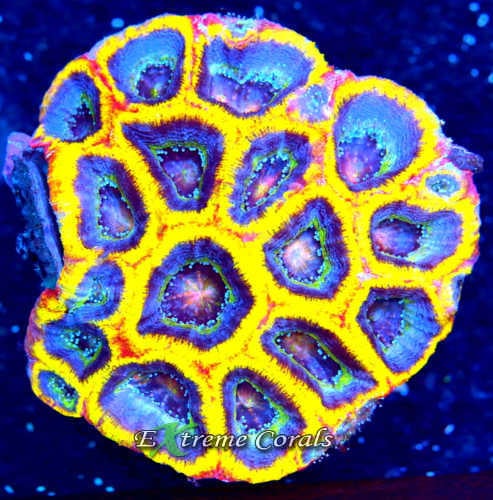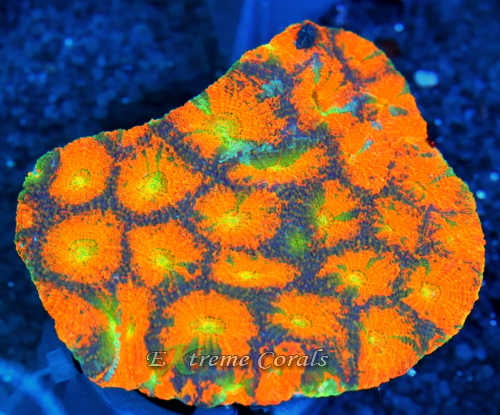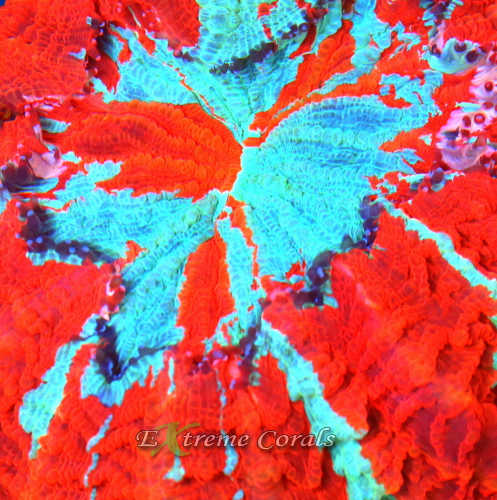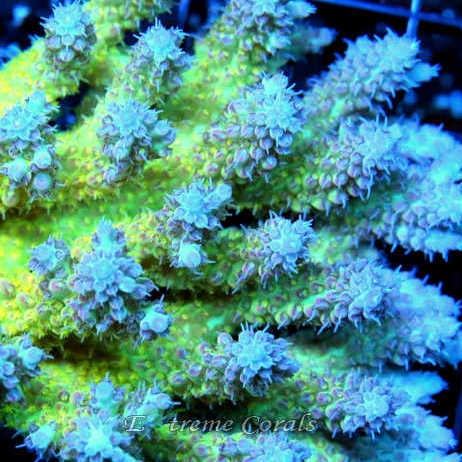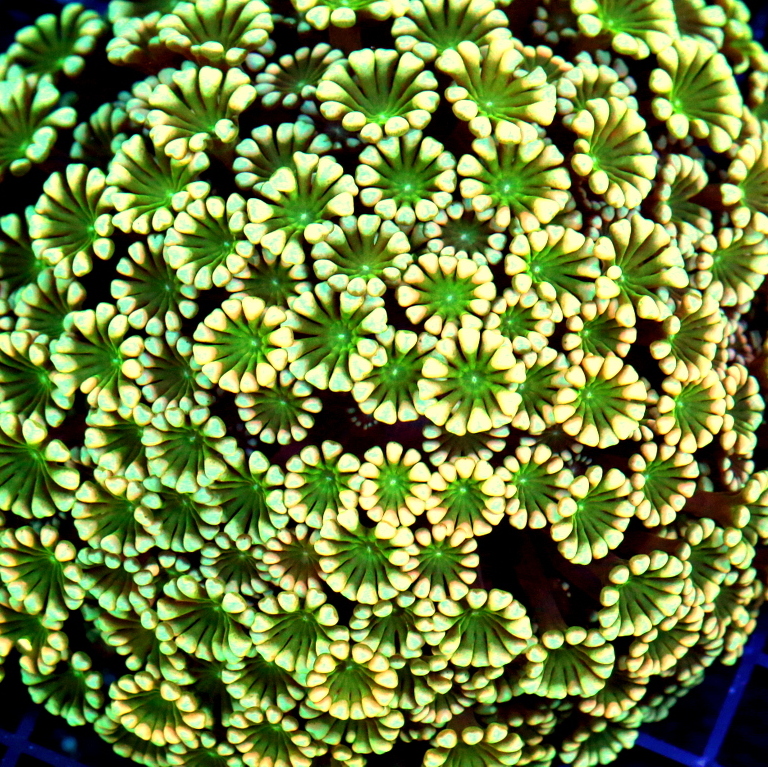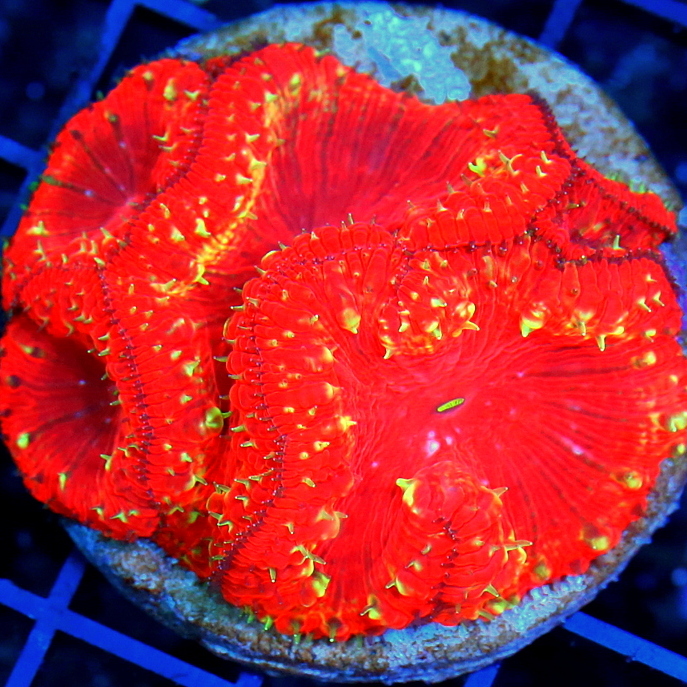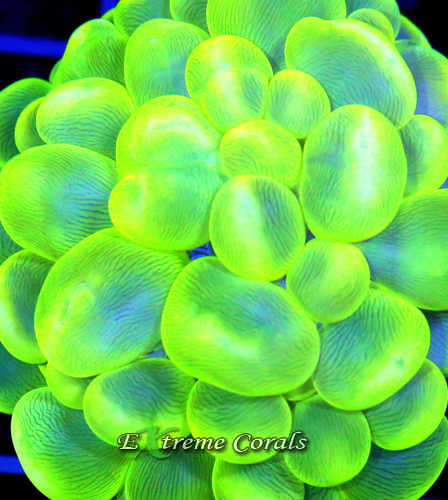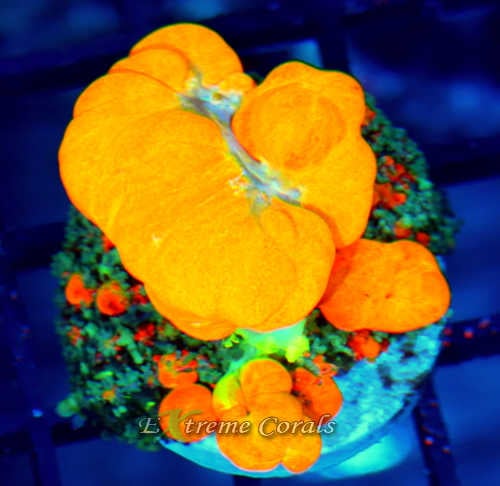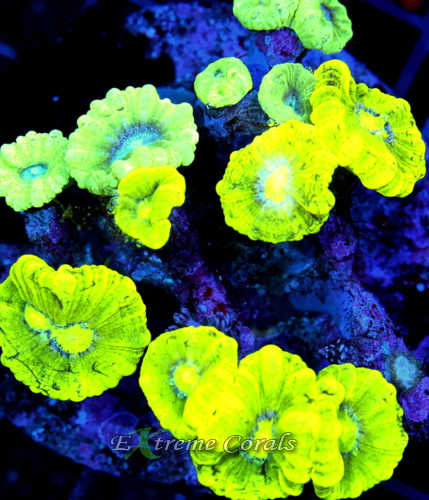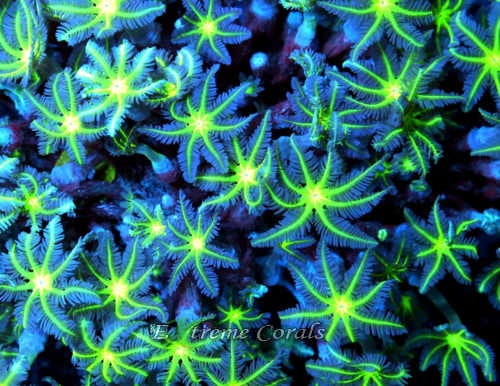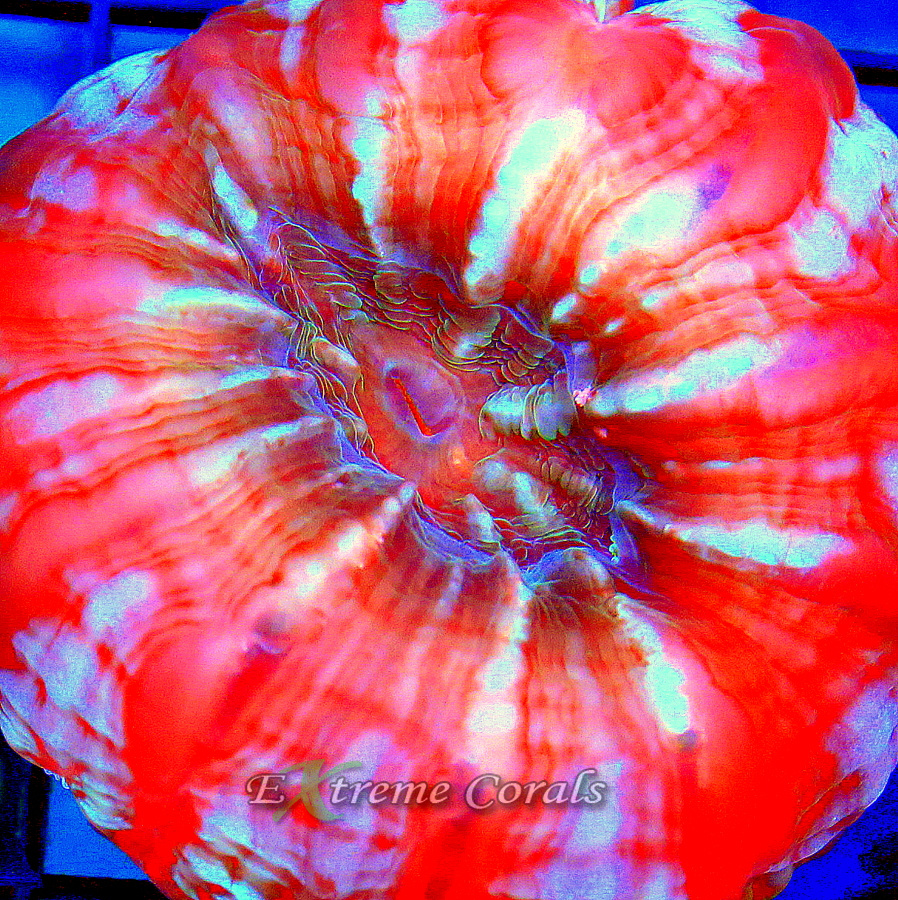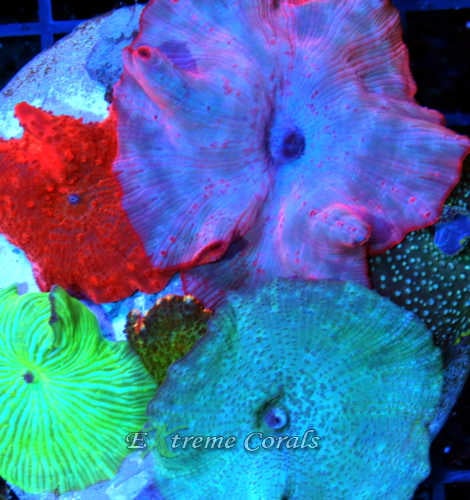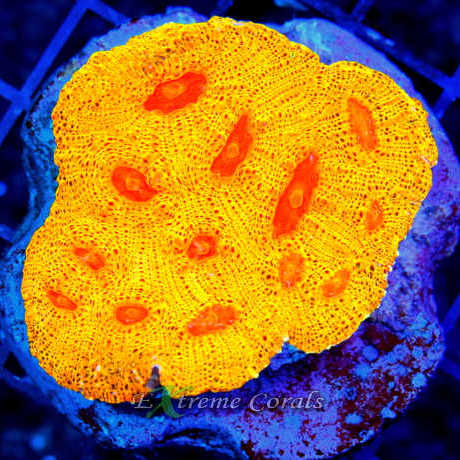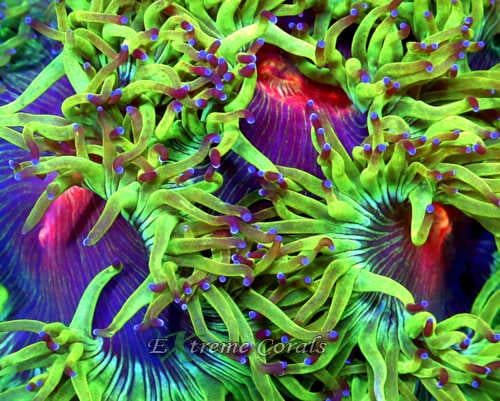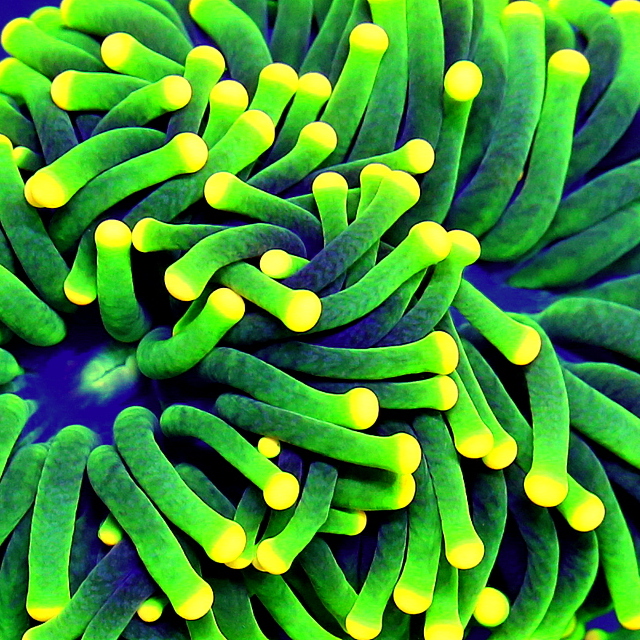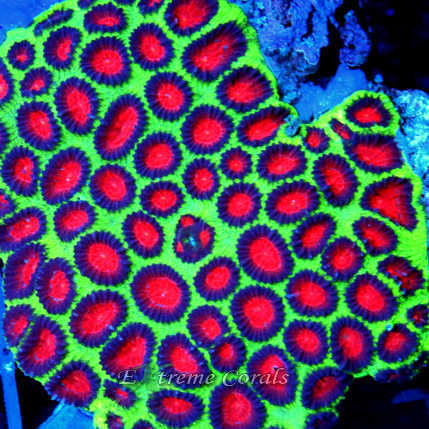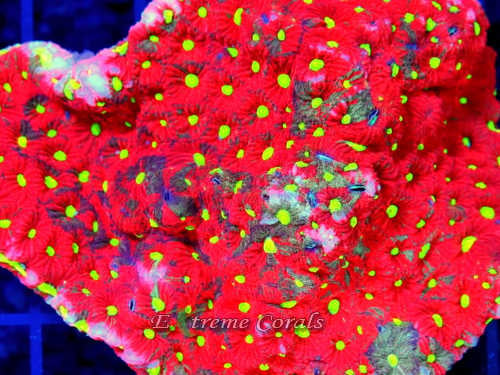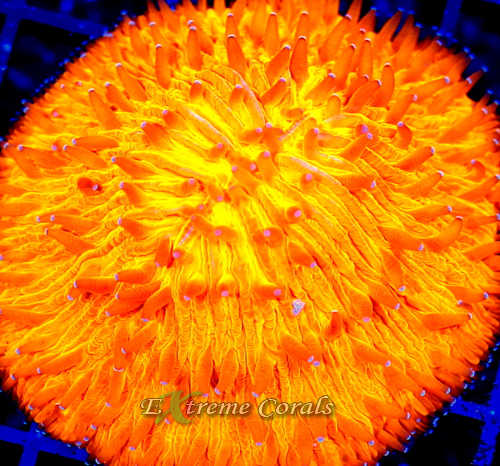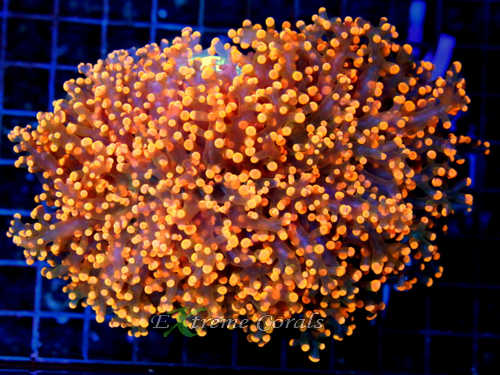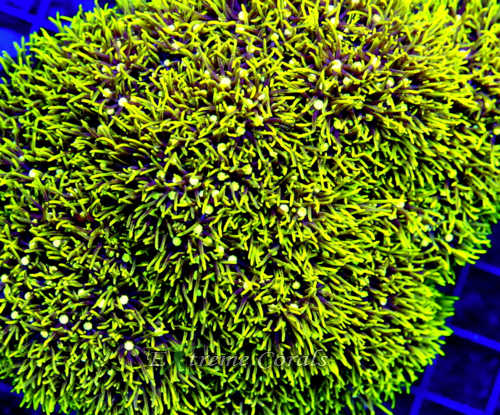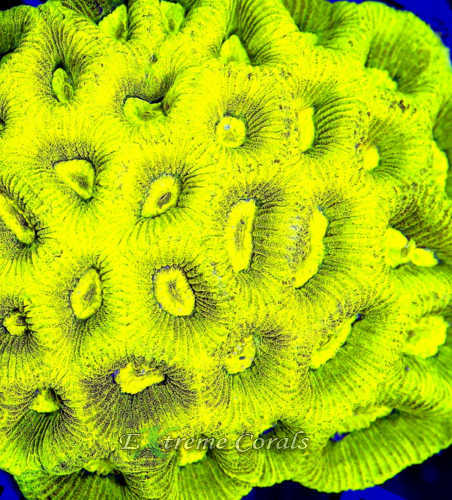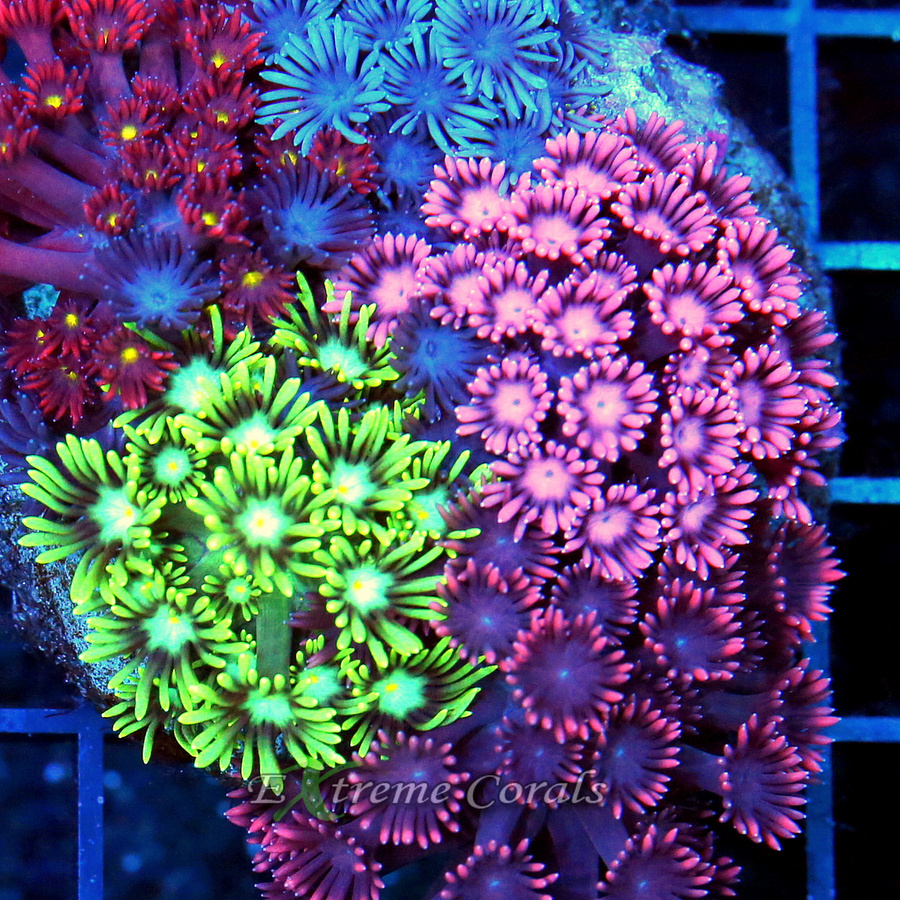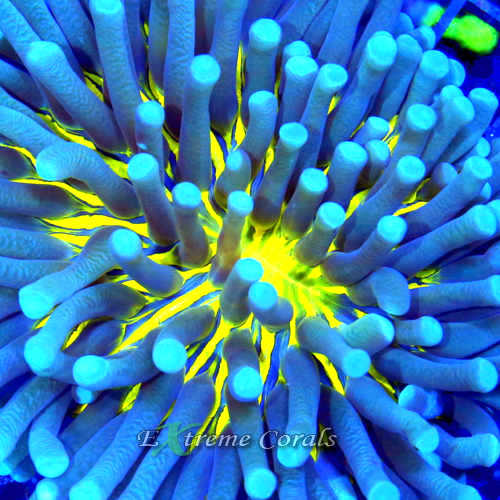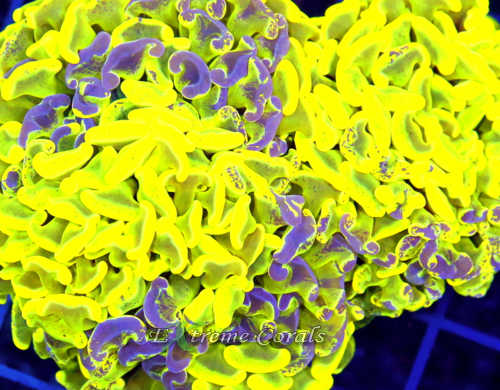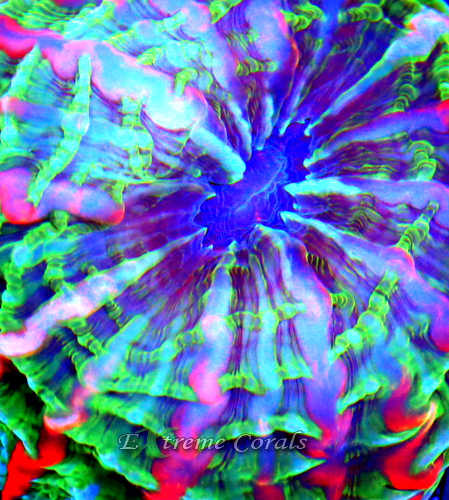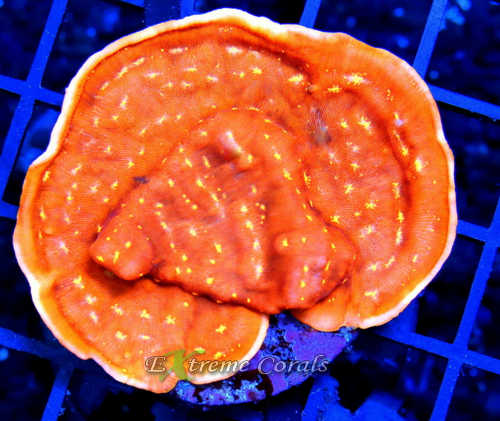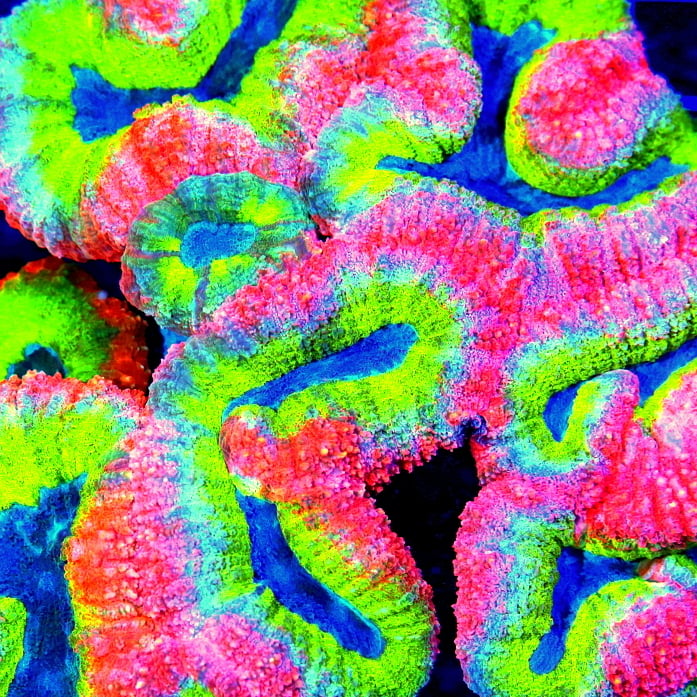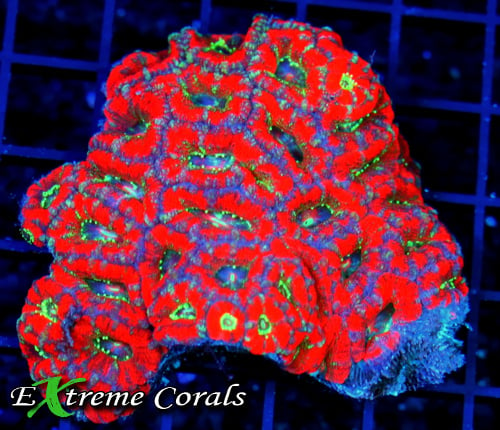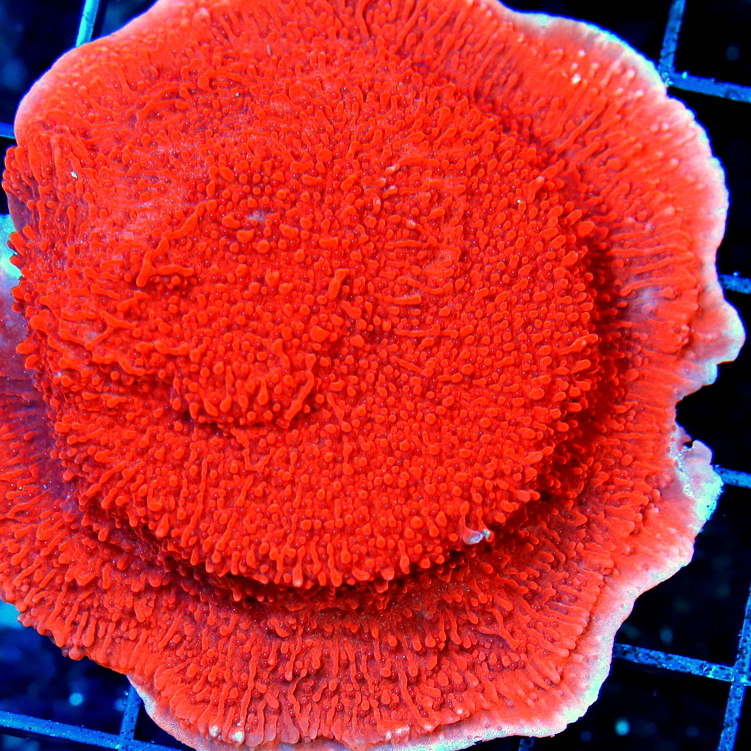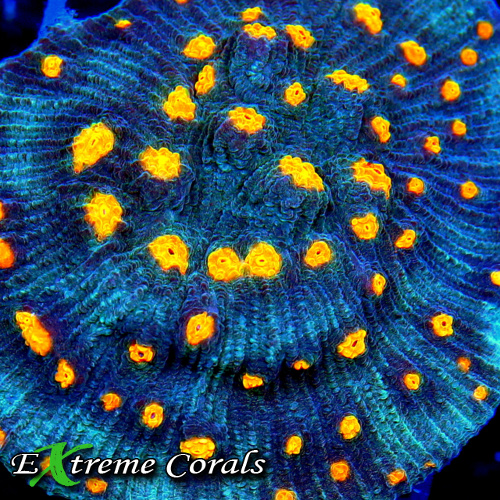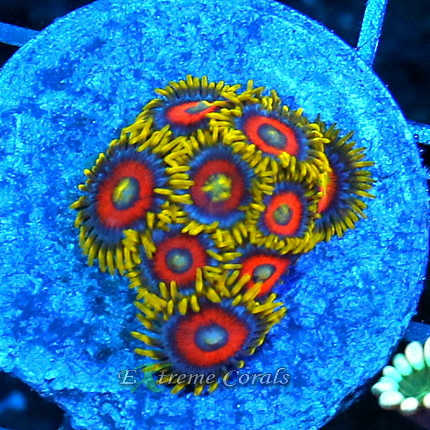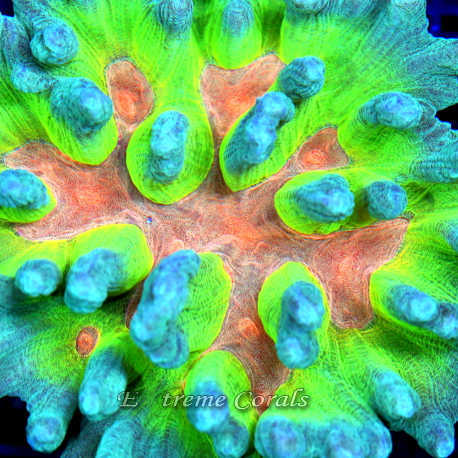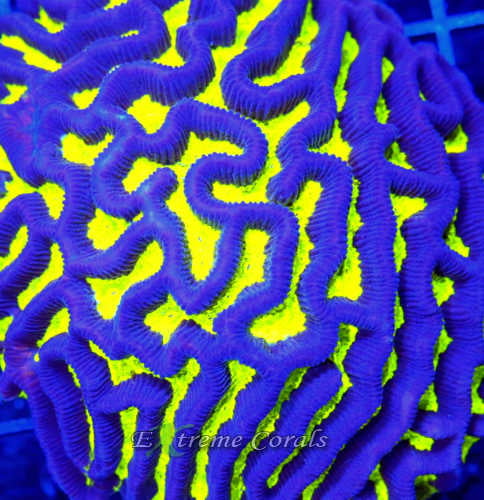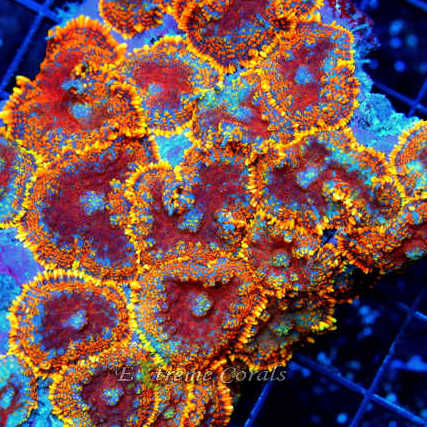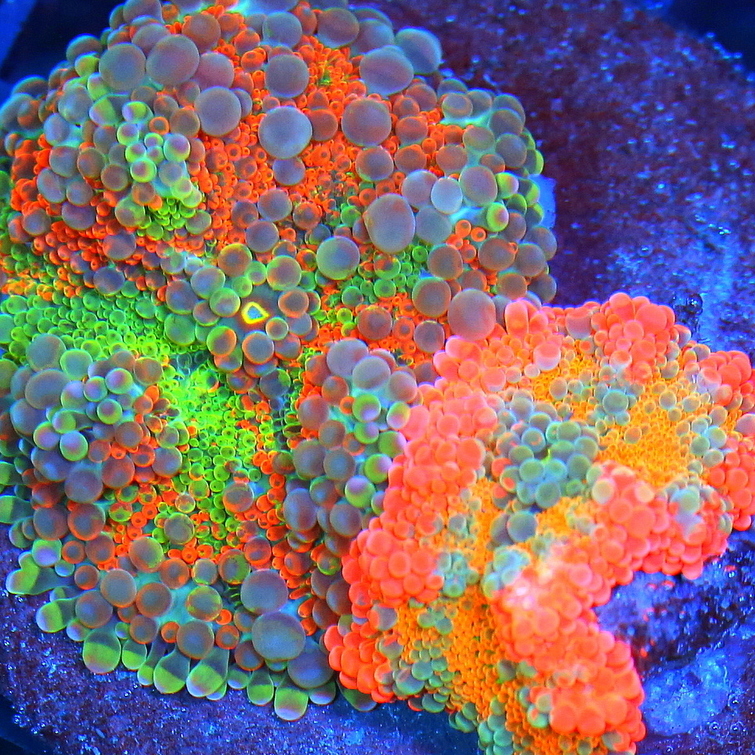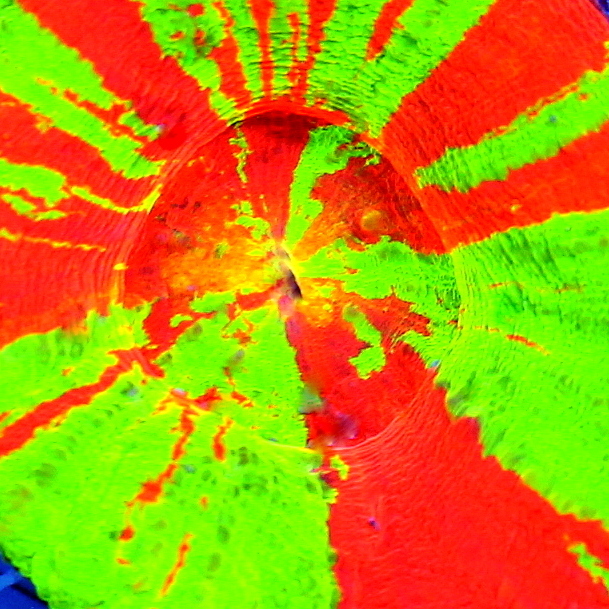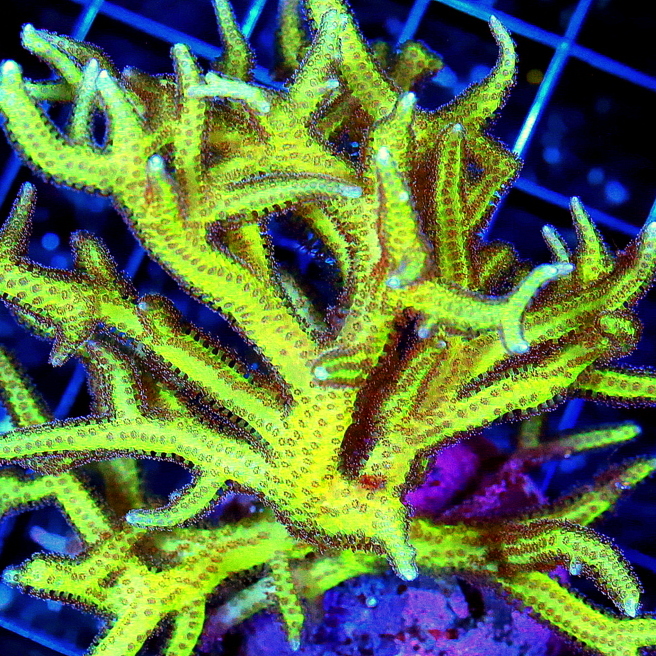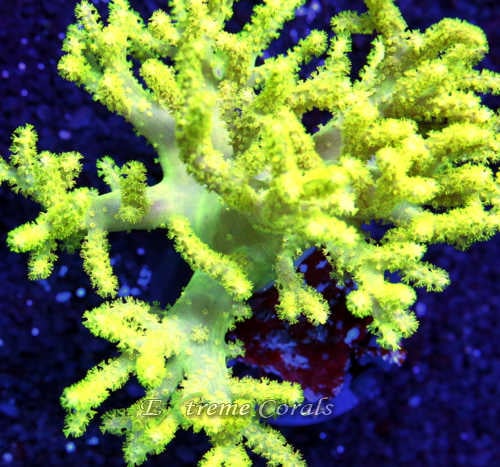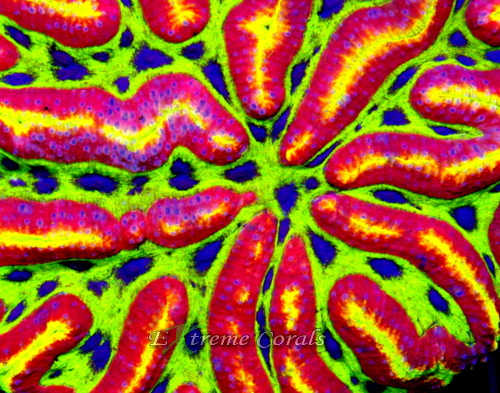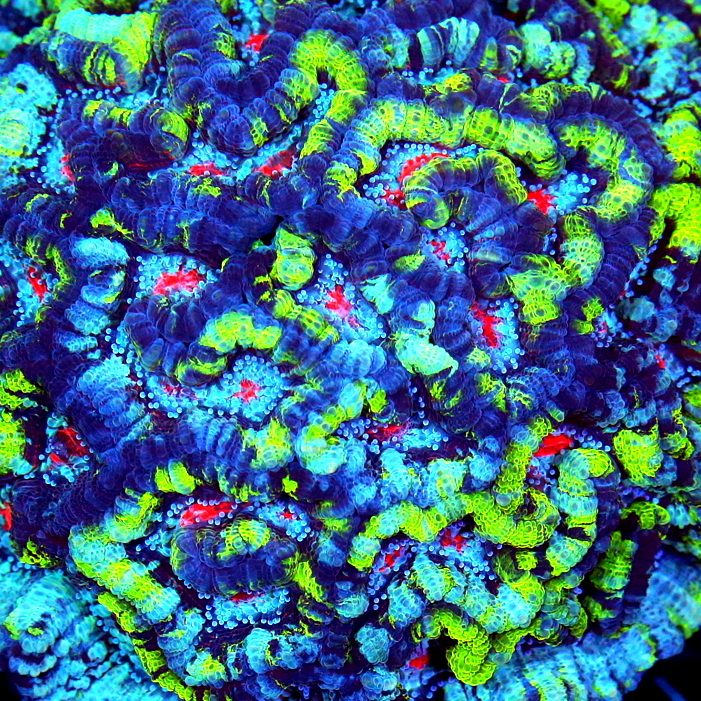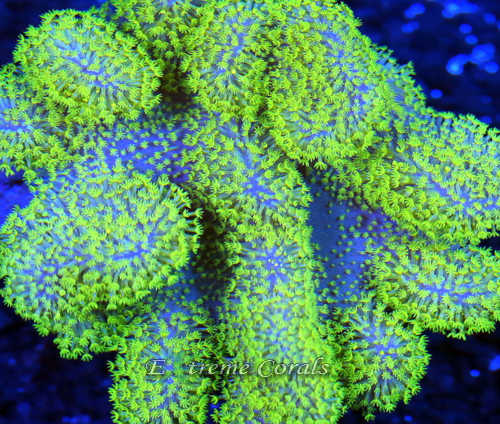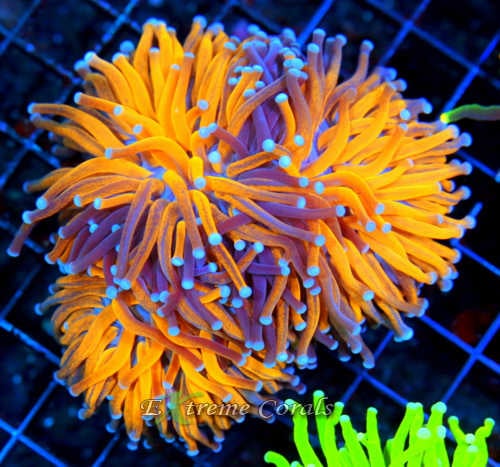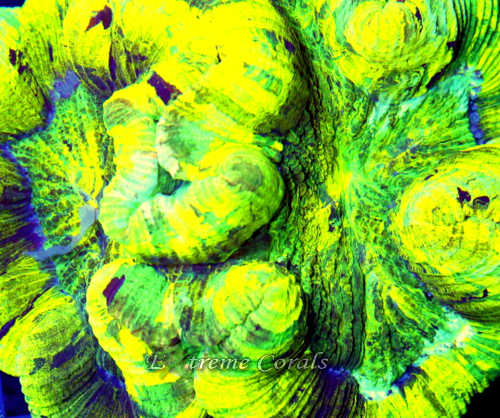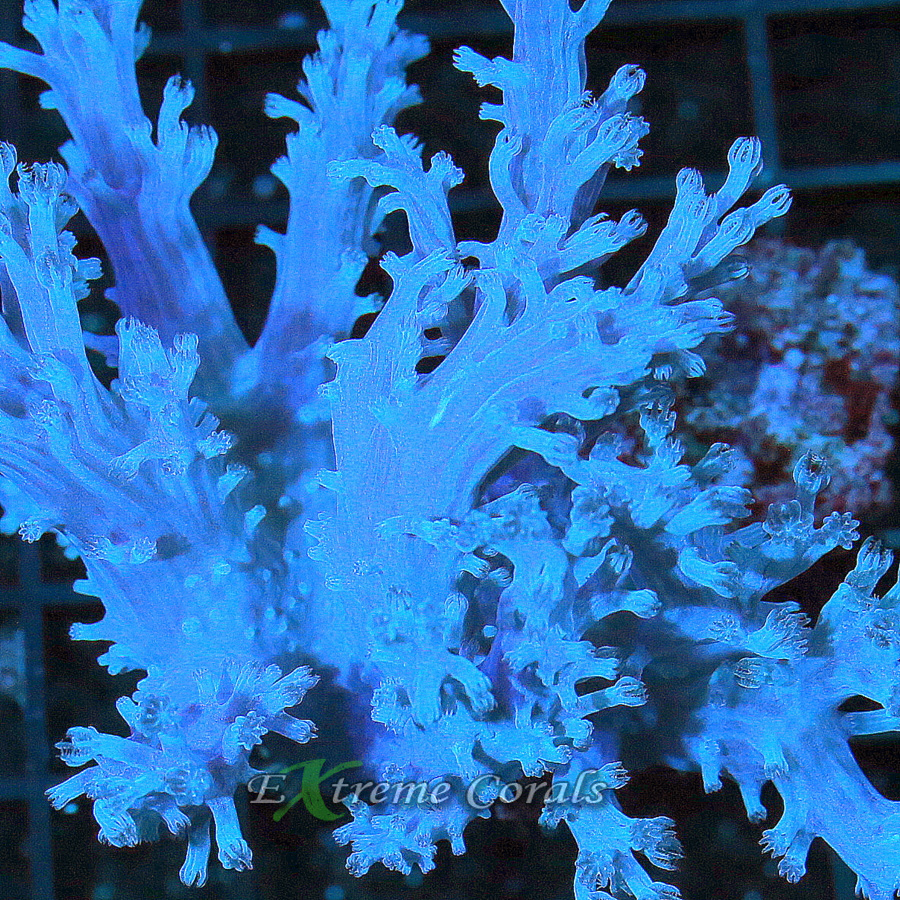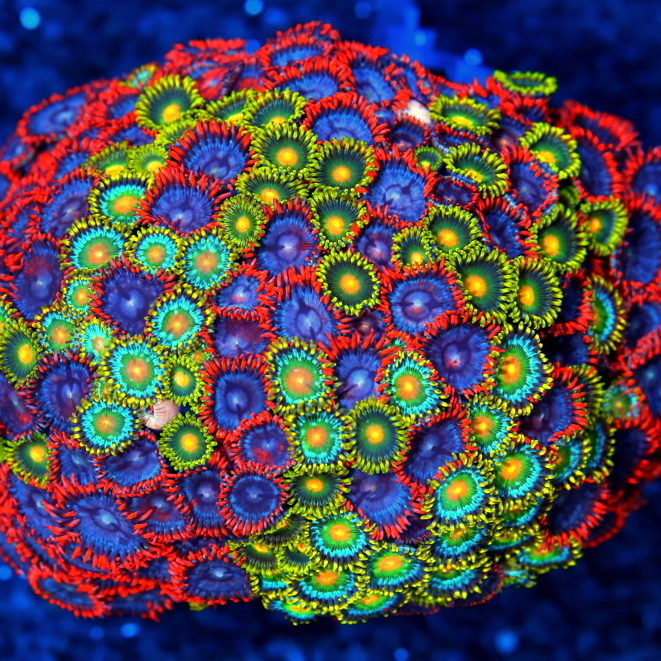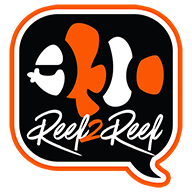Coral Care
- Low light (Normal output lights stacked over the entire tank)
- Medium light (Power compacts, VHO, few H.O. T5s)
- High light (Metal halides, A lot of H.O. T5s, or equivalent)
- Slow current
- Normal flow (should never be linear and directly flowing across the coral)
- Extreme flow (should never be linear and directly flowing across the coral)
- Beginner (easy to keep, generally very hardy corals)
- Intermediate (requires very clean water and/or feeding)
- Advanced (hard to keep and/or other special requirements)
- Phytoplankton/Dissolved nutrients
- Tiny (Rotifers or smaller)
- Very small (about the size of mysid shrimp)
Coral Care Tips By Coral Type
Click on Coral Photo for detailed Coral Care tips
Coral: Acan Bowerbanki
Lighting: Low Light Flow: Normal Difficulty: Advanced Food Size: Tiny
Coral: Acan Echinata
Lighting: Low Light Flow: Normal Difficulty: Advanced Food Size: Tiny
Coral: Acan Lordhowenesis
Lighting: Low Light Flow: Normal Difficulty: Advanced Food Size: Tiny
Coral: Acanthophyllia
Lighting: Low Light Flow: Normal Difficulty: Advanced Food Size: Tiny
Coral: Acropora
Lighting: High Flow: Extreme Flow Difficulty: Advanced Food Size: Tiny
Coral: Alveopora
Lighting: Medium Flow: Slow Flow - Normal Current Difficulty: Advanced Food Size: Phytoplankton - Tiny
Coral: Blastomussa
Lighting: Low to Medium Flow: Slow Current Difficulty: Beginner to Intermediate Food Size: Tiny - Very Small
Coral: Bubble
Lighting: Low to Medium Flow: Slow Current Difficulty: Beginner to Intermediate Food Size: Tiny - Very Small
Coral: Bounce Mushroom
Lighting: Low to Medium Flow: Slow Current Difficulty: Beginner to Intermediate Food Size: Tiny - Very Small
Coral: Candy Cane
Lighting: Medium-High Flow: Slow Current Difficulty: Intermediate Food Size: Very Small
Coral: Clove Polyps
Lighting: Medium-High Flow: Slow Current Difficulty: Intermediate Food Size: Very Small
Coral: Cynarina
Lighting: Medium-High Flow: Slow Current Difficulty: Intermediate Food Size: Very Small
Coral: Discosoma Mushroom
Lighting: Medium-High Flow: Slow Current Difficulty: Intermediate Food Size: Very Small
Coral: Echinophyllia
Lighting: Low to Medium Flow: Normal Flow Difficulty: Beginner to Intermediate Food Size: Tiny
Coral: Elegance
Lighting: Low to Medium Flow: Normal Flow Difficulty: Beginner to Intermediate Food Size: Tiny
Coral: Euphyllia
Lighting: Medium - High Flow: Slow Current Difficulty: Intermediate Food Size: Tiny
Coral: Favia
Lighting: Medium Flow: Normal Flow Difficulty: Beginner to Intermediate Food Size: Tiny
Coral: Favites
Lighting: Medium Flow: Normal Flow Difficulty: Beginner to Intermediate Food Size: Tiny
Coral: Fungia Plate
Lighting: Medium Flow: Normal Flow Difficulty: Beginner to Intermediate Food Size: Tiny
Coral: Frogspawn
Lighting: Medium Flow: Normal Flow Difficulty: Beginner to Intermediate Food Size: Tiny
Coral: Green Star Polyps
Lighting: Medium Flow: Normal Flow Difficulty: Intermediate Food Size: Tiny
Coral: Goniastrea
Lighting: Medium Flow: Normal Flow Difficulty: Intermediate Food Size: Tiny
Coral: Goniopora
Lighting: Medium - High Flow: Slow current - Normal Current Difficulty: Advanced Food Size: Phytoplankton - Tiny
Coral: Heliofungia
Lighting: Medium - High Flow: Slow Current Difficulty: Advanced Food Size: Tiny - Very Small
Coral: Hammer Coral
Lighting: Medium Flow: Slow - Normal Flow Difficulty: Intermediate Food Size: Tiny - Very Small
Coral: Indophyllia
Lighting: Medium Flow: Slow - Normal Flow Difficulty: Intermediate Food Size: Tiny - Very Small
Coral: Leptoseris
Lighting: Medium Flow: Slow - Normal Flow Difficulty: Intermediate Food Size: Tiny - Very Small
Coral: Lobophyllia
Lighting: Medium Flow: Slow - Normal Flow Difficulty: Intermediate Food Size: Tiny - Very Small
Coral: Micromussa
Lighting: High Flow: Normal - Extreme Flow Difficulty: Intermediate Food Size: Tiny
Coral: Montipora
Lighting: High Flow: Normal - Extreme Flow Difficulty: Intermediate Food Size: Tiny
Coral: Mycedium
Lighting: High Flow: Normal - Extreme Flow Difficulty: Intermediate Food Size: Tiny
Coral: Palythoa
Lighting: Medium - High Flow: Slow - Normal Flow Difficulty: Beginner Food Size: Tiny - Very Small
Coral: Pectinia
Lighting: Light - Medium Flow: Normal Flow Difficulty: Beginner Food Size: Tiny
Coral: Platygyra
Lighting: Light - Medium Flow: Normal Flow Difficulty: Beginner Food Size: Tiny
Coral: Rhodactis
Lighting: Low - High Flow: Slow Current Difficulty: Beginner Food Size: Phytoplankton
Coral: Ricordia
Lighting: High Flow: Normal - Extreme Flow Difficulty: Intermediate Food Size: Tiny
Coral: Scolymia
Lighting: Medium - High Flow: Extreme Flow Difficulty: Intermediate Food Size: Phytoplankton - Tiny
Coral: Seriatopora
Lighting: High Flow: Extreme Flow Difficulty: Advanced Food Size: Tiny
Coral: Sinularia Leather
Lighting: High Flow: Extreme Flow Difficulty: Advanced Food Size: Tiny
Coral: Symphyllia
Lighting: Medium Flow: Slow Current - Normal Flow Difficulty: Intermediate Food Size: Tiny - Very Small
Coral: Symphyllia Wilsoni
Lighting: Medium Flow: Slow Current - Normal Flow Difficulty: Intermediate Food Size: Tiny - Very Small
Coral: Toadstool Leather
Lighting: Medium Flow: Slow Current - Normal Flow Difficulty: Intermediate Food Size: Tiny - Very Small
Coral: Torch
Lighting: Medium Flow: Slow Current - Normal Flow Difficulty: Intermediate Food Size: Tiny - Very Small
Coral: Wellsophyllia
Lighting: Medium - High Flow: Slow Current - Normal Flow Difficulty: Beginner Food Size: Phytoplankton - Tiny
Coral: Xenia
Lighting: Medium - High Flow: Slow Current - Normal Flow Difficulty: Beginner Food Size: Phytoplankton - Tiny
Coral: Zoanthids
Lighting: Medium - High Flow: Slow Current - Normal FlowDifficulty: Beginner Food Size: Tiny - Very Small
The Importance of Age
It is unwise to add any coral to a reef tank from one to three months after initial setup. This varies depending on your specific tank and the speed of cycling. During this time there can be dramatic swings of ammonia, nitrite, and pH. Calcium, carbonates, and other critical elements are also lacking at this point.
After this time soft corals are generally the best animal to place in the tank first. You should have no more diatom algae or "local problematic" areas in the tank. Soft corals for the most part they are less susceptible to any small fluctuations that happen from here on out. They are a lot less dependent on calcium bicarbonate for skeletal growth and digestion. The nutrient pathways needed for the survival of soft corals is also usually establish by this point.
The next step is probably adding corals referred to LPS (large polyp stonies). The best time to start adding these animals is after the tank has been set up for 5-7 months. Ideally you should have started to see small patches of coralline algae with a diameter of 3mm or more.
The last corals should be the SPS (small polyp stonies). These require excellent water conditions and good advanced knowledge and experience. These are also some of the most rewarding and colorful corals in the world. It is well worth your time and money to wait 9-12 months before adding these animals. They need vary stable and specific conditions. When you start to see many patches of coralline algae larger than the size of a quarter it is a good biological sign that your tank may be ready for these corals.
Suggested Filtering Methods
Biological Needs:
- We recommend a light fish load.
- The tanks should ideally have between 1-2 lbs of live rock per gallon depending on the porosity of the
rock.
- A layer of sand will give further surface for beneficial bacterial to grow, help buffer the tanks parameters,
and allow beneficial organisms to breed in the tank
- We recommend a sump for a refugium that is growing Chaetomorphia to further help nutrient levels and provide
additional food supplies. On a reverse daylight cycle this will also stabilize pH levels at night. The turbulent
flow will facilitate gas exchange and devices such as heaters and calcium reactors can be easily put in this
space.
- Filter the freshwater using an RO or DI system before mixing with your salt. Make sure you are using a high
quality salt and mix the saltwater at least 24 hrs before use.
- It is critical to use this same filtered fresh water to replace water that was evaporated out of the tank. Using
ordinary tap water invariably leads to algae outbreaks.
- We strongly recommend using a skimmer on the tank at all times. It is the most critical tool to keeping your
tank and its inhabitants healthy. The skimmer removes organic waste before they become ammonia and cause
nutrient issues. It works with the biological filtration and increases the water quality. Running skimmer-less
is for experts only who fully understand the dynamics of their tank and even then there are risks of bad
situations developing at an alarming rate.
- Some carbon or other organic resins may be needed from time to time to keep water quality ideal. We do not
recommend a canister filter however as this can lead to an increase in nitrates.
- A wet dry filter has no place in a reef tank. These are great for fish only tanks, but is a nutrient problem
waiting to happen in a reef environment.
- Heaters, fans, and/or chillers are recommended if there is not a stable temperature. Temperatures ranging from
78-84 are generally acceptable to corals. The most important thing is consistency. There should NOT be more than
a 2 degree fluctuation throughout the day.
- Water movement and circulation is one of the most important parts for long term health. You want as much no
linear flow as you tank and its inhabitants can handle. In the wild most of these animals have hundreds of
thousands of gallons pass over them daily. Get high flow but make it turbulent so it does not become a straight
stream of water that will strip the flesh from the corals. Wavemakers are recommended, but not absolutely
necessary.
- Chemical supplementation can be done trough many different methods, but the most important aspects to keep up
are Calcium (~440), dKh (12), and pH (8.2).
- Last is the great light debate. We believe that it is virtually impossible to give a coral too much light. Some
animals may need to be acclimated to the higher light levels, but in general the more light you can give them
the better off the corals will be. Sunlight is about 6500K, 10000K is the color temperature around a depth of
8m, and 20000K simulates light around 17m. In general 65K gives the best growth rates as higher wattage bulbs,
while lights toward the other end of the spectrum tend to highlight the phosphorescence colors of the corals. We
primarily use very high wattage 20K metal halide lights to get the benefits of both growth and color.
Please send us an email or give us a call if you have any questions or concerns. Thanks!
Also check out your local Marine Aquarium Society!
Above all be patient and research the needs of the animals under your care. If you stock your aquarium too quickly or before it has cycled properly, you will have ammonia and or nitrites in your tank that probably will kill your animals. The best case scenario would be that you will have severely stressed animals, nuisance algae, and an unstable system. Please understand that we want you to be in this hobby for a long time. Many of these animals will live for over decades if treated properly and we want to do our part to ensure that this happens. This is general advice that we want our customers to understand before a purchase is made from us and we would encourage you to reconsider buying animals from us if you feel that your tank does not fit within these suggestions.

